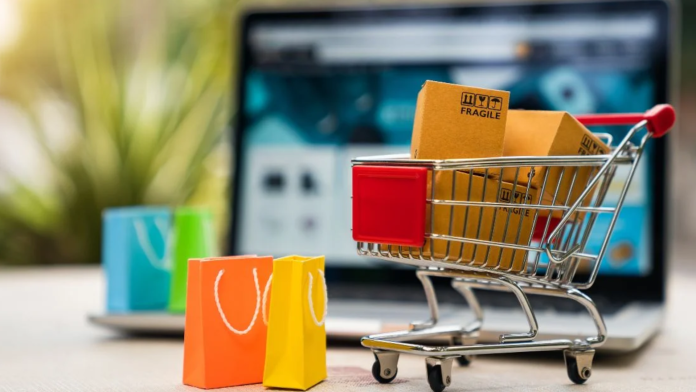Contrary to expectations, the lifting of Covid-era mobility restrictions and the return to regular business hours for brick-and-mortar stores haven’t put a damper on online commerce. The surge in web commerce during the pandemic, driven by the convenience of contactless doorstep delivery, continues unabated.
Recent data from market research firms NielsenIQ and GfK India reveals that a wide range of products, spanning from basic snacks like cookies to big-ticket items like televisions and refrigerators, are being sold on ecommerce platforms at rates comparable to or even higher than during the lockdown period.
“This reflects a post-pandemic change in consumer behavior, particularly in metro areas, where online shopping is gaining popularity due to its convenience, variety and competitive pricing,” said Praful Babar, head of e-commerce for FMCG at NielsenIQ.
According to the data, sales across various FMCG categories experienced a notable increase in calendar year 2023 compared to the preceding year. For instance, NielsenIQ data revealed that the contribution of e-commerce platforms to impulse food sales, including chocolates, confectioneries, and salty snacks, rose from 3% in 2022 to 5% in 2023.
Continue Exploring: New PwC study shows divergent online shopping habits across India’s urban-rural spectrum
Regarding fabric care products such as washing powders/liquids, pre-post wash solutions, detergent cakes/bars, and blues, the contribution increased from 6% to 7% during the period under review. Similarly, for home cleaners designed for utensils, toilets, floors, and glass, the surge was from 10% to 11% in 2023.
According to industry estimates, the surge in these categories alone would have contributed an additional INR 3,000 crore to e-commerce business in 2023.
In the realm of electronic products, there was a 1-2 percentage point rise in e-commerce contribution in 2023 compared to 2022. Last year, e-commerce constituted approximately 33% of television sales, 20% of washing machines, 15% of refrigerator sales, and 10% of air conditioner sales. Researchers anticipate this trend of gradual increases in web commerce to persist in 2024.
According to NielsenIQ, the growth of the online channel for FMCG products is mainly fueled by consumption, whereas offline growth is influenced by both price and volume factors.
Mayank Shah, the vice president of Parle Products, mentioned that in specific categories like protein, health, and gourmet food, the contribution of e-commerce is significantly higher.
Continue Exploring: Cash-on-Delivery remains top choice for Indian online shoppers, IIM-A survey finds
“Several smaller and premium brands are exclusively on ecommerce. In metroes, it’s quick commerce which is driving adoption,” he said.
According to GfK data, electronic and household appliances such as refrigerators, washing machines, and televisions experienced faster growth in the online channel compared to offline in 2023. Categories like frost-free refrigerators, front-loading washing machines, and televisions sized 55 inches and above have doubled their growth online compared to their respective categories offline.
“Traditionally, consumers prioritized pricing and mass-market options when shopping online. However, recent trends indicate a shift towards premium segments,” said Anant Jain, head of customer success – India at GfK.
In FMCG, the trend is similar. According to Babbar, the online volume growth of impulse food and fabric care at 47% and 32% respectively in metropolitan areas was four times higher compared to offline sales. Likewise, categories such as soft drinks, biscuits, packaged atta, and refined edible oils are also demonstrating notable volume growth.
To leverage this trend, Babar highlighted that FMCG brands and retailers are strategically investing in omnichannel presence to expand their market share.
“This includes optimizing their online presence, establishing robust online distribution networks, tailoring marketing strategies to cater to online shoppers, and ensuring seamless e-commerce experiences for consumers,” he said.
According to GfK, urban Indian consumers are increasingly relying on social media for their shopping requirements. Over 70% of smartphone and computer users now utilize their devices for online purchases. Additionally, more than half of urban consumers find shopping on social media enjoyable, largely due to targeted product recommendations from brands.
Continue Exploring: Indian consumption trends shift: Less spending on food, more on discretionary items and durable goods, new govt data reveals


